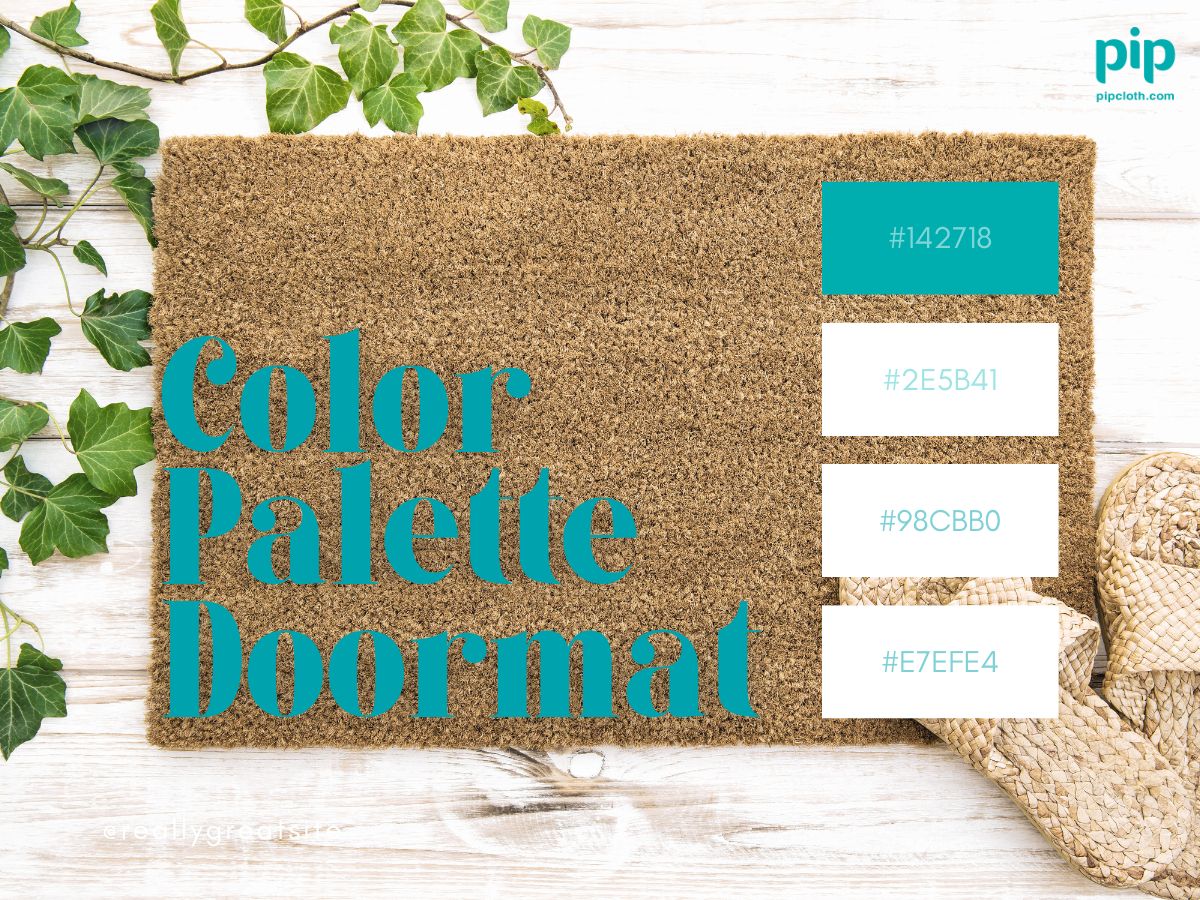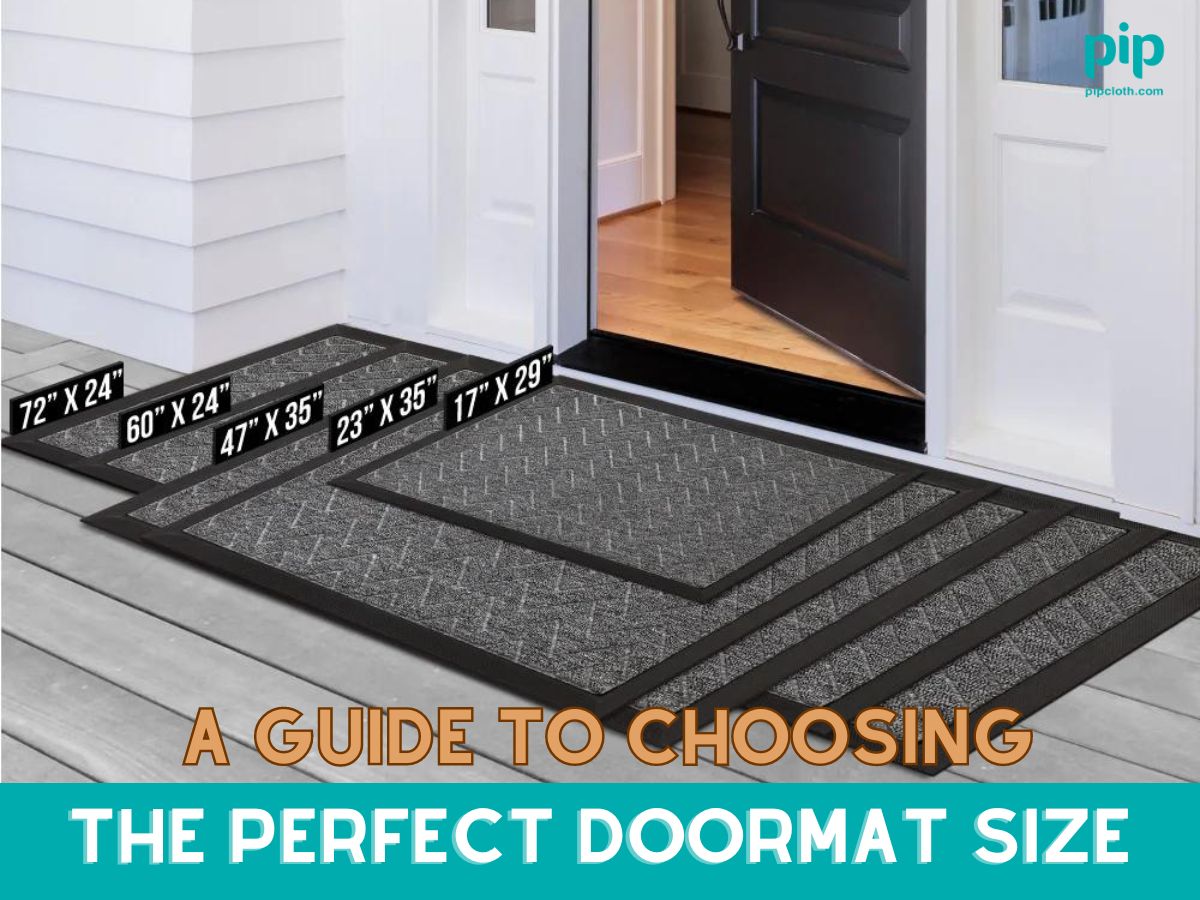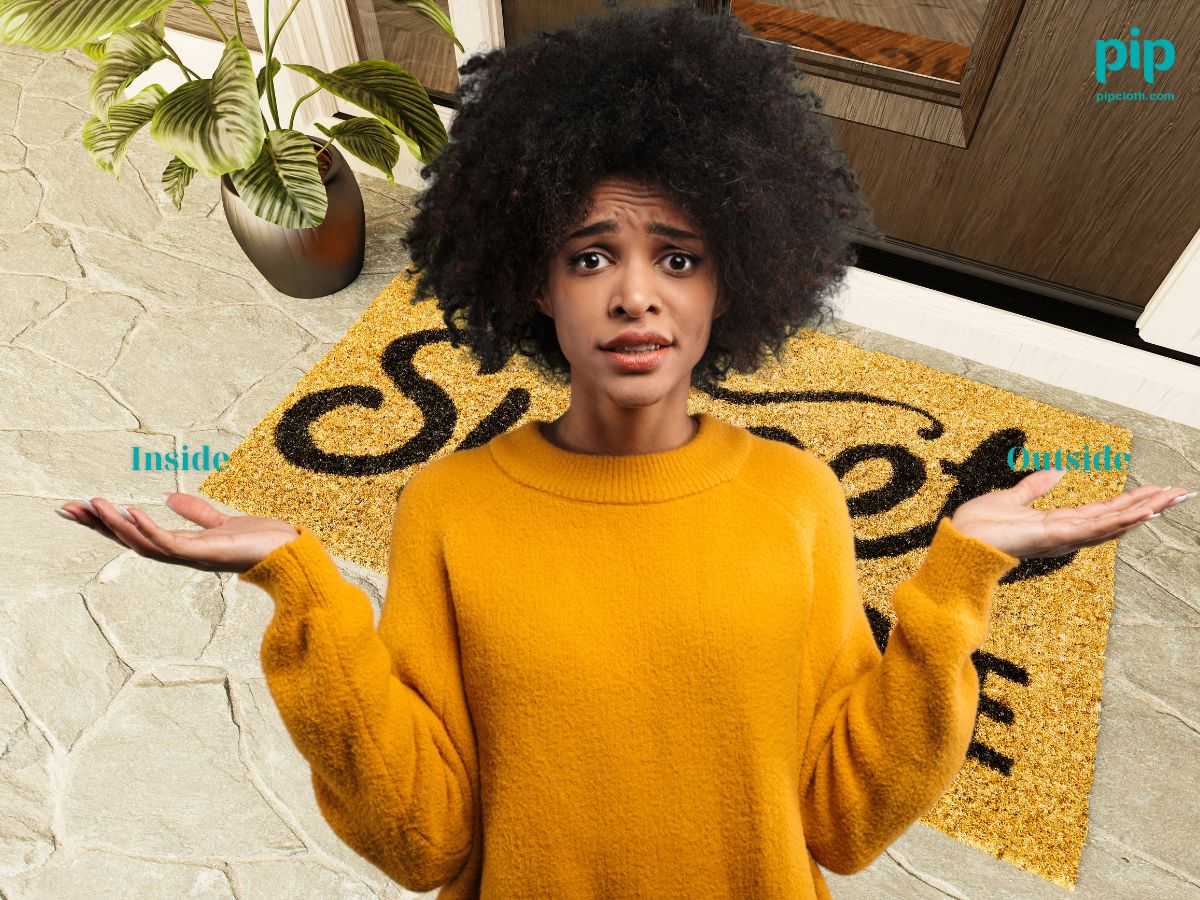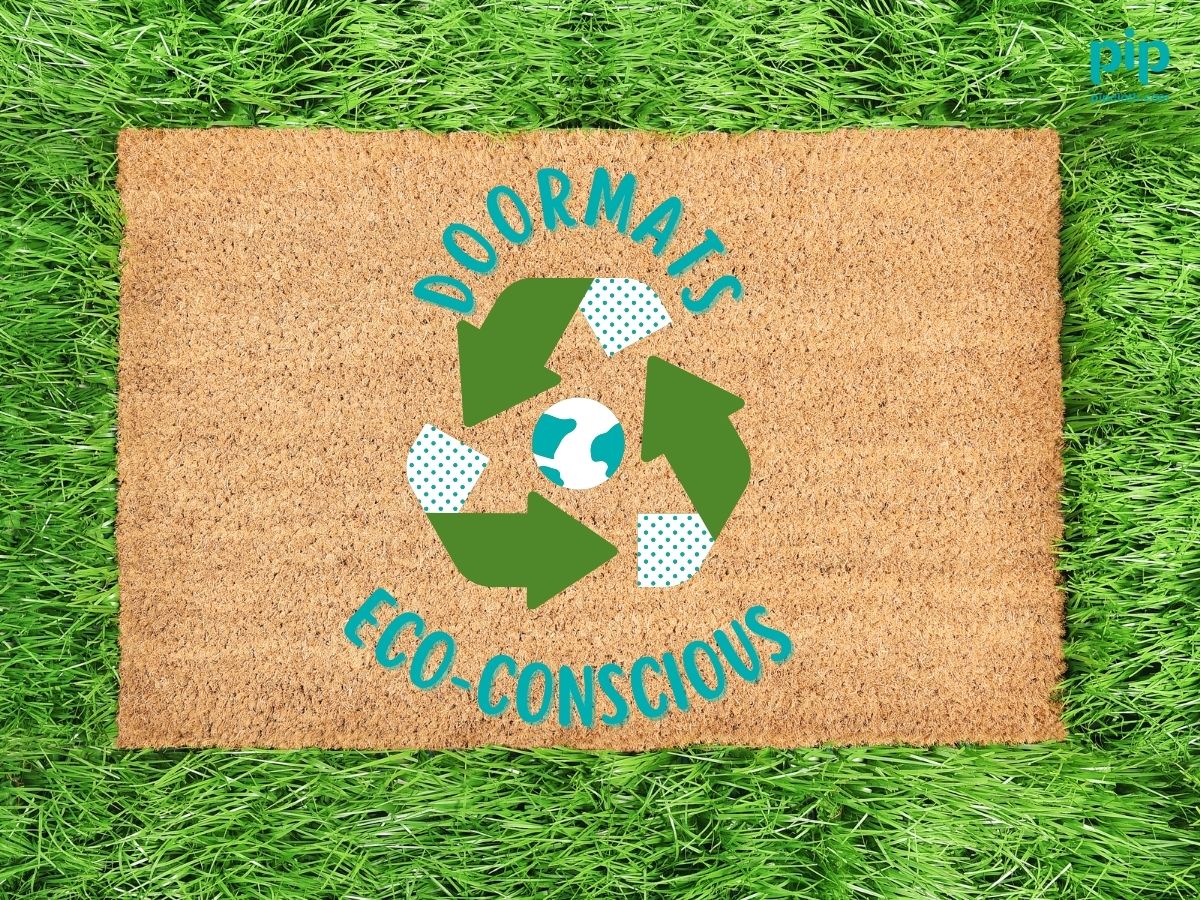When it comes to creating a cohesive and inviting home exterior, harmonizing your doormat with your color palette is a key consideration. Your doormat serves as a focal point for your entryway, acting as a welcoming gesture to guests and tying together the various design elements of your home’s exterior. A study by the Color Marketing Group found that color accounts for 85% of the reason people purchase a particular product, highlighting the importance of color coordination in home design.
In this comprehensive guide, we’ll explore the essential aspects of selecting the perfect doormat to complement your color scheme, from understanding color theory and assessing your home’s palette to choosing the right material, style, and placement for your doormat. By the end of this article, you’ll have all the knowledge and inspiration you need to elevate your entryway and boost your home’s curb appeal.
Understanding Color Theory for Home Exteriors
Color theory is the foundation for creating a harmonious and visually appealing home exterior. The color wheel, which consists of primary colors (red, blue, and yellow), secondary colors (green, orange, and purple), and tertiary colors (combinations of primary and secondary colors), serves as a valuable tool for selecting complementary hues that create contrast and visual interest.
According to a survey by the National Association of Realtors, 78% of home buyers believe that curb appeal is important when choosing a home. Applying color theory to your home’s exterior can significantly enhance its curb appeal and overall aesthetic.
When applying color theory to your home’s exterior, there are several tried-and-true color schemes to consider:
- Monochromatic: This scheme utilizes varying shades and tints of a single color, creating a cohesive and calming aesthetic. For example, a monochromatic scheme might feature a range of blue hues, from light sky blue to deep navy.
- Analogous: An analogous color scheme employs colors that sit adjacent to each other on the color wheel, such as blue, blue-green, and green. This creates a harmonious and serene look that’s easy on the eye.
- Triadic: A triadic scheme uses three colors evenly spaced on the color wheel, such as red, yellow, and blue. This bold and vibrant combination can add energy and personality to your home’s exterior.
In addition to these color schemes, it’s essential to consider the psychology of color when selecting hues for your home. Colors can evoke specific emotions and set the tone for your space. For instance, warm colors like red and yellow are associated with energy and excitement, while cool colors like blue and green are often linked to calmness and tranquility.

Assessing Your Home’s Exterior Color Palette
Before selecting a doormat, it’s crucial to assess your home’s existing exterior color palette. Start by identifying the dominant colors of your home, which may include the main color of your siding or brick, as well as any existing accent colors on doors, shutters, or trim.
When considering accent colors, keep the 60-30-10 rule in mind. This principle suggests that:
- 60% of your exterior should be the dominant color
- 30% should be a secondary color
- 10% should be an accent color
This creates a balanced and visually appealing distribution of hues. A study by the International Association of Color Consultants found that homes with a well-coordinated color scheme can increase perceived value by up to 5.5%.
It’s also important to factor in the style and material of your home when assessing your color palette. Different architectural styles lend themselves to specific color schemes – for example, a traditional Victorian home might feature a more muted, historical palette, while a modern home may embrace bolder, contemporary hues. Similarly, the natural colors of materials like wood or stone should be considered when selecting complementary colors.
Choosing the Right Doormat Material and Style
Once you’ve assessed your home’s color palette, it’s time to consider the material and style of your doormat. Popular doormat materials include:
| Material | Attributes |
| Coir | Durable, eco-friendly, rustic appearance |
| Rubber | Weather-resistant, easy to clean, various colors/patterns |
| Polyester | Soft, plush feel, wide array of colors and designs |
| Nylon | Stain-resistant, long-lasting, ideal for high-traffic areas |
In terms of style, there are several options to choose from:
- Solid colors: A solid-colored doormat is a simple and versatile choice that can easily coordinate with your home’s color palette. Opt for a hue that complements your front door or matches your trim for a cohesive look.
- Geometric designs: Geometric patterns, such as chevrons, stripes, or lattice prints, can add a modern and eye-catching touch to your entryway. Choose a design that incorporates colors from your home’s exterior for a unified aesthetic.
- Monograms and personalization: Personalized doormats, featuring your family name or initials, add a unique and welcoming touch to your entryway. You can choose a font and color that complements your home’s style for a custom look. A survey by the National Association of Home Builders found that 80% of homeowners prefer personalized design elements in their homes.
- Novelty and seasonal designs: Showcase your personality or celebrate the changing seasons with a novelty or seasonal doormat. From humorous sayings to holiday-specific designs, these doormats can add a playful and festive touch to your entryway.
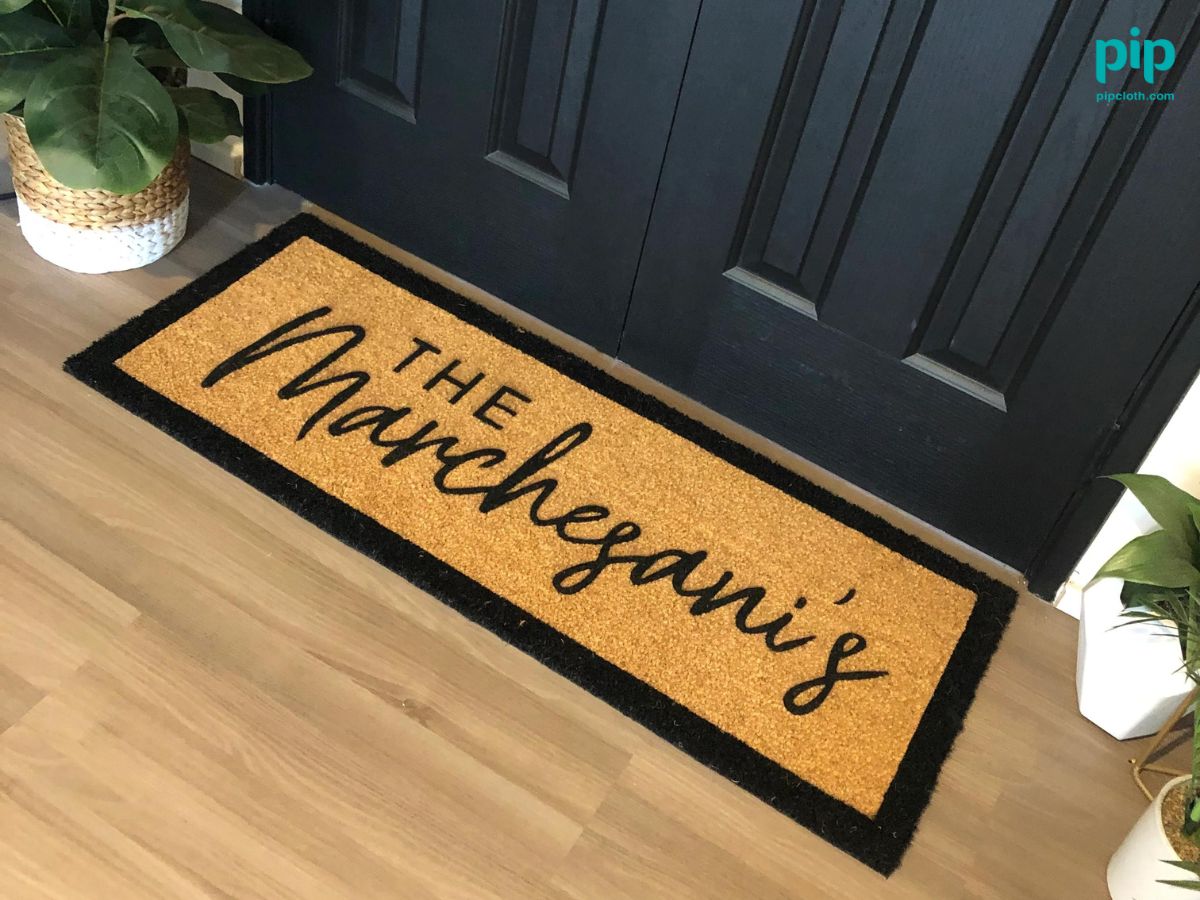
Selecting a Doormat Color to Complement Your Home
When selecting a doormat color, there are several approaches you can take to ensure it complements your home’s exterior:
A. Matching the doormat color to your front door
One straightforward approach is to match your doormat color to your front door. This creates a cohesive look and emphasizes the entrance as a focal point. For example, if your front door is a bold red, choosing a doormat with red accents or a red background can create a striking and coordinated appearance.
B. Using the doormat as a contrasting accent
Alternatively, you can use your doormat as a contrasting accent to add visual interest to a neutral exterior. If your home features a palette of muted tones, such as beige or gray, selecting a doormat in a bright, complementary color can provide a pop of personality and draw the eye to your entryway. According to color psychology, contrasting colors can increase brand recognition by up to 80%.
C. Incorporating colors from your landscaping
Another approach is to draw inspiration from your surrounding landscape. If your yard features colorful flowers or vibrant foliage, consider incorporating those hues into your doormat selection. This creates a seamless transition from your yard to your entryway and ties your exterior elements together.
D. Considering the overall mood and style of your home
Finally, consider the overall mood and architectural style of your home when choosing a doormat color. If your home has a traditional or historic aesthetic, opt for classic colors and patterns that reflect that style. For a more modern or contemporary look, embrace bolder hues and graphic designs that complement your home’s sleek lines and minimalist features.

Doormat Placement and Size Considerations
Proper doormat placement and size are key factors in creating a functional and visually appealing entryway.
A. Choosing the right size doormat for your entryway
When selecting a doormat size, ensure that it is proportional to your door. A doormat that is too small can look out of place and fail to provide adequate coverage, while an oversized mat can overwhelm your entryway. A good rule of thumb is to choose a doormat that is at least 80% of your door’s width.
B. Proper placement for functionality and aesthetics
In terms of placement, your doormat should be centered in front of your door, with enough space for the door to open freely. Ideally, there should be a minimum of 18 to 24 inches of space between the edge of the doormat and the door frame. This allows guests to stand comfortably on the mat while waiting to be welcomed inside.
Can’t Shut the Door Over My Mat! Help!
C. Using multiple doormats for larger entrances
For larger entrances or double doors, consider using multiple doormats to create a cohesive and balanced look. You can layer mats of different sizes, textures, and colors to add visual interest and define the space. Just be sure to coordinate the designs and hues for a unified aesthetic. A study by the American Society of Interior Designers found that 61% of consumers believe a well-coordinated entryway is essential for creating a positive first impression.
Maintaining and Replacing Your Doormat
To keep your doormat looking its best and ensure it lasts for years to come, regular maintenance is essential.
A. Regular cleaning and maintenance tips
- Shake out or vacuum your doormat regularly to remove loose dirt, dust, and debris. This prevents buildup and keeps the mat looking fresh.
- For deeper cleaning, follow the manufacturer’s care instructions. Some mats can be hosed down or spot-cleaned with a mild detergent, while others may require professional cleaning.
- If your mat gets wet, allow it to air dry completely before placing it back at your entryway to prevent mildew or odors.
B. Signs it’s time to replace your doormat
Even with proper care, doormats will eventually show signs of wear and tear. Here are some indications that it’s time to replace your mat:
- Excessive fraying, holes, or unraveling fibers
- Persistent stains or discoloration that won’t come out with cleaning
- Flattened or matted pile that no longer effectively traps dirt and moisture
- Noticeable odors that linger even after washing
According to a survey by the National Cleaning Survey, the average doormat should be replaced every 1-2 years, depending on foot traffic and maintenance.
C. Rotating doormats seasonally for variety and longevity
One way to extend the life of your doormats and add visual interest to your entryway is to rotate them seasonally. This allows you to showcase different designs and colors throughout the year while giving each mat a break from heavy foot traffic. For example, you might choose a bright, floral design for spring and summer, then switch to a rich, jewel-toned mat for fall and winter.
Coordinating Doormats with Other Exterior Elements
To create a truly cohesive and inviting entryway, consider coordinating your doormat with other exterior elements.
A. Matching doormats to outdoor rugs or runners
If you have a larger front porch or entryway, you may want to incorporate an outdoor rug or runner in addition to your doormat. When selecting these pieces, choose colors and patterns that complement your doormat and create a unified look. For example, if your doormat features a bold geometric pattern, choose a rug with a similar color scheme or a more subtle design to balance the space.
Does Your Doormat Need to Be Inside or Outside?
B. Coordinating with porch furniture cushions and pillows
If you have seating on your front porch, such as rocking chairs or a porch swing, consider coordinating your doormat with the cushions and pillows. You can pull colors from your doormat and incorporate them into your outdoor fabric choices, creating a cohesive and inviting space that feels like an extension of your home. A study by the International Casual Furnishings Association found that 70% of consumers consider outdoor living spaces as important as indoor living spaces.
C. Tying in the doormat color with potted plants or flowers
Another way to create a harmonious entryway is to tie in your doormat color with your potted plants or flowers. Choose planters in complementary hues or select flowers that echo the shades found in your doormat. This creates a seamless transition from your doorstep to your surrounding landscape and adds a pop of natural beauty to your entryway.
Doormat Inspiration and Ideas
Now that we’ve covered the key considerations for selecting and coordinating your doormat, let’s explore some inspiring ideas and examples.
A. Monochromatic doormat and front door combinations
For a bold and sophisticated look, try a monochromatic color scheme that features your doormat and front door in the same hue. For example, a deep navy doormat paired with a navy front door creates a striking and elegant entrance. To add visual interest, choose a doormat with a textured or patterned design in the same color family.
B. Using a doormat to add a pop of color to a neutral exterior
If your home features a neutral exterior palette, such as white, gray, or beige, use your doormat to add a pop of color and personality. A bright yellow or turquoise doormat can provide a cheerful and unexpected accent that draws the eye to your entryway. Just be sure to choose a hue that complements your home’s undertones for a cohesive look. According to a survey by the Paint Quality Institute, 36% of homeowners would choose a bold front door color to make a statement.
C. Seasonal and holiday doormat ideas
Celebrate the changing seasons or upcoming holidays with a festive doormat that reflects the occasion. For fall, consider a doormat featuring rich, autumnal hues and motifs like leaves or pumpkins. During the winter holidays, opt for a mat with traditional colors like red and green, or playful designs like snowflakes or reindeer. These seasonal touches can add a warm and inviting feel to your entryway.

D. Unique and personalized doormat designs
Finally, don’t be afraid to let your personality shine through your doormat selection. Choose a design that reflects your family’s unique style and interests, whether it’s a custom monogram, a humorous saying, or an artistic pattern. You can even opt for a handmade or artisan-crafted doormat for a one-of-a-kind look that showcases your individual taste. A study by the National Retail Federation found that 58% of consumers are willing to pay more for personalized products.
Conclusion
Harmonizing your doormat with your home’s color palette is a simple yet effective way to enhance your entryway and create a welcoming first impression. By understanding color theory, assessing your home’s existing palette, and selecting the right doormat material, style, and placement, you can create a cohesive and inviting exterior that reflects your personal style.
Remember, your doormat is an opportunity to express your creativity and add a touch of personality to your home. Don’t be afraid to experiment with different color combinations, patterns, and designs until you find the perfect match for your space.
Ultimately, a well-coordinated doormat not only enhances your home’s curb appeal but also sets the tone for the warm and inviting atmosphere within. By following the tips and ideas outlined in this guide, you’ll be well on your way to creating an entryway that makes a lasting impression on all who cross your threshold.
FAQ Section:
Q1: How often should I replace my doormat?
According to a survey by the National Cleaning Survey, the average doormat should be replaced every 1-2 years, depending on foot traffic and maintenance. Signs that it’s time to replace your mat include excessive fraying, persistent stains, flattened pile, and lingering odors.
Q2: Can I use an indoor rug as a doormat?
While indoor rugs may look attractive, they are not designed to withstand the outdoor elements and heavy foot traffic. Stick to doormats specifically made for exterior use, as they are constructed with durable materials and often feature slip-resistant backings.
Q3: How do I keep my doormat from slipping?
To prevent your doormat from sliding around, look for options with slip-resistant backings, such as rubber or latex. You can also use a non-slip rug pad underneath your doormat for added stability. Be sure to place your mat on a flat, even surface for best results.
Q4: What size doormat should I choose for a double door entryway?
For a double door entryway, opt for a larger doormat that spans the width of both doors. A mat measuring at least 72 inches wide by 24 inches deep should provide ample coverage and create a balanced look. Alternatively, you can use two smaller mats placed side by side for a coordinated effect.
Q5: How can I incorporate my doormat into my seasonal decor?
Swapping out your doormat with the changing seasons is an easy way to refresh your entryway and celebrate holidays. Choose mats with seasonal colors, patterns, or motifs, such as autumnal hues for fall or festive designs for winter holidays. Coordinate your seasonal doormat with other exterior elements, like wreaths or potted plants, for a cohesive look.
Q6: Can I personalize my doormat with my family name or monogram?
Yes, many retailers offer customizable doormats that allow you to add your family name, monogram, or a unique design. Personalized doormats add a special touch to your entryway and make a great housewarming or wedding gift. Be sure to choose a font and color that complements your home’s overall style.
Q7: What is the best way to clean my doormat?
The best cleaning method for your doormat depends on its material and construction. For most mats, start by shaking out loose dirt and debris, then vacuum both sides to remove embedded particles. Spot-clean stains with a mild detergent and warm water, using a soft-bristled brush if needed. Rinse thoroughly and allow the mat to air dry completely before placing it back in your entryway.
Q8: How do I choose a doormat color that complements my home’s exterior?
When selecting a doormat color, consider your home’s existing color palette, including the main color of your siding or brick, accent colors on doors and trim, and the overall style of your home. Choose a doormat that either complements or contrasts with your dominant colors, or pick up hues from your landscaping for a cohesive look. When in doubt, opt for a neutral shade that coordinates with a variety of color schemes.
Q9: Can I use multiple doormats in my entryway?
Yes, layering multiple doormats can add visual interest and functionality to your entryway. For example, you might place a larger, more decorative mat on top of a smaller, more durable one for added texture and style. When using multiple mats, be sure to coordinate the colors and patterns for a cohesive look, and ensure that the mats are properly secured to prevent tripping hazards.
Q10: What are some eco-friendly doormat options?
If you’re looking for an environmentally friendly doormat, consider options made from sustainable materials like natural coir (coconut fiber), recycled rubber, or reclaimed textiles. Look for mats with backing made from recycled plastics or natural latex, and choose durable, long-lasting options to reduce waste over time. Some companies even offer doormats made from recycled ocean plastics, combining style and sustainability.
Q11: Can I expedite the shipping of my doormat order?
PipCloth offers a Fast Express worldwide shipping option that delivers your doormat within 7 to 12 days of placing your order. This expedited service costs $12.95. And with Standard Express – Worldwide Shipping (Delivery within 15 to 18 days of order): $4.95

